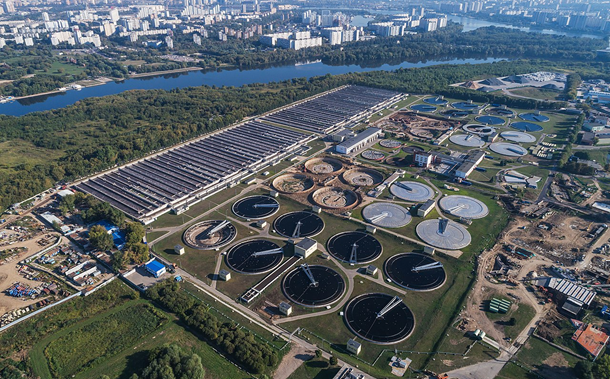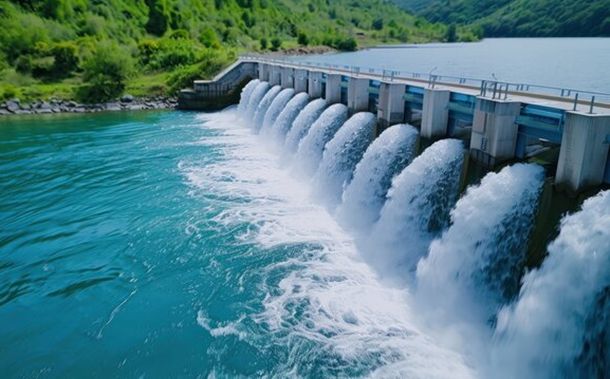Life Cycle Assessment of Phosphogypsum as Filler Material for Coal Fly Ash-Based Geopolymer
Downloads
The global accumulation of phosphogypsum (PG), with annual generation exceeding 175 Mt/year, presents significant environmental challenges. While studies have demonstrated PG's potential as a filler material in geopolymer composite, comprehensive environmental impact assessments of such valorization approaches remain limited. This study presents the first comparative life cycle assessment (LCA) of acid- and alkali-activated PG-CFA geopolymers in the context of sustainable industrial waste management. Geopolymer technology can eliminate the need for traditional landfilling of PG in coastal areas and, therefore, reduce their negative environmental impacts. LCA was conducted to assess the impacts of repurposing 1kg functional unit of PG as geopolymer precursors coupled with acid- and alkali-based activators compared to the current disposal practices of these solid wastes. The inventory was modeled after a phosphoric acid plant using the wet dihydrate process, a coal-fired power plant, and a laboratory-scale coal fly ash-phosphogypsum geopolymer (FAPG) synthesis upscaled for industrial application. The most number of environmental benefits was observed for acid FAPG particularly via reductions in CO2-eq emissions by 40%, 90% in energy consumption, and 36% in mineral resource extraction. Alkali FAPG excelled in water acidification and scarcity by 60% and it could outperform acid FAPG environmentally via sensitivity analysis under a similar formulation blend. Further research can focus on optimizing FAPG formulation, finding alternatives for the acid and alkali activators, and reviewing industrial standards for widespread FAPG applications. These results imply the potential of integrating FAPG manufacturing in PG- and CFA-generating industries to emulate a circular economy.
Downloads
[1] Bilal, E., Bellefqih, H., Bourgier, V., Mazouz, H., Dumitraş, D. G., Bard, F., Laborde, M., Caspar, J. P., Guilhot, B., Iatan, E. L., Bounakhla, M., Iancu, M. A., Marincea, Ş., Essakhraoui, M., Li, B., Diwa, R. R., Ramirez, J. D., Chernysh, Y., Chubur, V., … Haneklaus, N. (2023). Phosphogypsum circular economy considerations: A critical review from more than 65 storage sites worldwide. Journal of Cleaner Production, 414. doi:10.1016/j.jclepro.2023.137561.
[2] Bouargane, B., Pérez-Moreno, S. M., Barba-Lobo, A., Bakiz, B., Atbir, A., & Pedro Bolívar, J. (2023). Behavior of heavy metals and natural radionuclides along the Moroccan phosphogypsum carbonation process with several alkaline reagents. Chemical Engineering Science, 280. doi:10.1016/j.ces.2023.119013.
[3] Li, H., Chen, Y., Zheng, H., Huang, P., Yang, P., Chen, Q., Weng, X., He, D., & Song, S. (2021). Effect of geological origin of apatite on reverse flotation separation of phosphate ores using phosphoric acid as depressant. Minerals Engineering, 172, 107182. doi:10.1016/j.mineng.2021.107182.
[4] Li, H., Mao, Y., Zheng, H., Kasomo, R. M., Huang, P., Chen, Y., Chen, Q., Weng, X., He, D., & Song, S. (2022). Impact of geological origin on flotation separation of apatite from dolomite using β-naphthyl sulfonate formaldehyde condensate as depressant. Minerals Engineering, 176, 107323. doi:10.1016/j.mineng.2021.107323.
[5] Li, H., Ge, W., Zhang, J., Kasomo, R. M., Leng, J., Weng, X., Chen, Q., Gao, Q., Song, S., Xiao, L., & Tian, C. (2020). Control foaming performance of phosphate rocks used for wet-process of phosphoric acid production by phosphoric acid. Hydrometallurgy, 195, 105364. doi:10.1016/j.hydromet.2020.105364.
[6] Soto-Cruz, F. J., Pérez-Moreno, S. M., Ceccotti, E., Barba-Lobo, A., Bolívar, J. P., Casas-Ruiz, M., & Gázquez, M. J. (2024). Valorisation diagnosis of waste from the decontamination of phosphogypsum leachates through a combined calcium carbonate/hydroxide process. Heliyon, 10(9), e30610. doi:10.1016/j.heliyon.2024.e30610.
[7] Pyagai, I., Zubkova, O., Babykin, R., Toropchina, M., & Fediuk, R. (2022). Influence of Impurities on the Process of Obtaining Calcium Carbonate during the Processing of Phosphogypsum. Materials, 15(12), 4335. doi:10.3390/ma15124335.
[8] Akfas, F., Elghali, A., Aboulaich, A., Munoz, M., Benzaazoua, M., & Bodinier, J. L. (2024). Exploring the potential reuse of phosphogypsum: A waste or a resource? Science of the Total Environment, 908. doi:10.1016/j.scitotenv.2023.168196.
[9] Wu, F., He, M., Qu, G., Zhang, T., & Liu, X. (2023). Synergistic densification treatment technology of phosphogypsum and aluminum ash. Process Safety and Environmental Protection, 173, 847–858. doi:10.1016/j.psep.2023.03.075.
[10] Ramirez, J. D., Diwa, R. R., Palattao, B. L., Haneklaus, N. H., Tabora, E. U., Bautista, A. T., & Reyes, R. Y. (2022). Rare earths in Philippine phosphogypsum: Use them or lose them. Extractive Industries and Society, 10, 101082. doi:10.1016/j.exis.2022.101082.
[11] Chouaybi, I., Azifa, A., Moujahid, E. M., & Bettach, M. (2023). Waste to wealth: Synthesis of hydrocalumite from Moroccan phosphogypsum and aluminum wastes. Waste Management, 171, 26–31. doi:10.1016/j.wasman.2023.08.020.
[12] Skvortsova, P., Ablieieva, I., Boiko, A., Chernysh, Y., Bataltsev, Y., Kuzomenska, K., & Roubík, H. (2025). Assessment of ecological safety and economic efficiency of biosorption technology for soil protection after hostilities. Journal of Hazardous Materials Advances, 18, 100677. doi:10.1016/j.hazadv.2025.100677.
[13] Saade-Sbeih, M., Feraille, A., & Alaoui Soulimani, A. (2019). Life Cycle Assessment of Alternative Road Base Materials: The Case of Phosphogypsum. IOP Conference Series: Earth and Environmental Science, 323(1), 012092. doi:10.1088/1755-1315/323/1/012092.
[14] Davidovits, J. (1994). Global warming impact on the cement and aggregates industries. World Resource Review, 6(2), 263-278.
[15] Davidotis, J. (1994). Properties of Geopolymer Cements. First International Conference on Alkaline Cements and Concretes., October 1994, 131–149. www.geopolymer.org
[16] Grant Norton, M., & Provis, J. L. (2020). 1000 at 1000: Geopolymer technology—the current state of the art. Journal of Materials Science, 55(28), 13487–13489. doi:10.1007/s10853-020-04990-z.
[17] Sun, M., Ma, L., Dai, Q., Yang, J., Xie, L., Hu, Y., Duan, L., Yan, X., Zhou, G., Zeng, L., Shao, L., Hu, B., & Yan, Q. (2024). Preparation of functional geopolymers from municipal solid waste incineration fly ash: An approach combining experimental and computational simulation studies. Journal of Environmental Management, 355, 120226. doi:10.1016/j.jenvman.2024.120226.
[18] Li, Y., Min, X., Ke, Y., Liu, D., & Tang, C. (2019). Preparation of red mud-based geopolymer materials from MSWI fly ash and red mud by mechanical activation. Waste Management, 83, 202–208. doi:10.1016/j.wasman.2018.11.019.
[19] Wang, X., Cheng, C., & Wang, D. (2024). Effect of rice husk ash on mechanical properties of rubber doped geopolymer recycled concrete. Case Studies in Construction Materials, 20, 3406. doi:10.1016/j.cscm.2024.e03406.
[20] Saeed, K., Al-Khyat, S., Hacheem, Z. A., & Fartosy, S. H. (2024). Evaluating the Efficiency of Alkaline Activator with Silica-Rich Wastes in Stabilizing Cadmium-Contaminated Soil. Civil Engineering Journal (Iran), 10(7), 2123–2143. doi:10.28991/CEJ-2024-010-07-04.
[21] Mwenge, P., & Rutto, H. (2025). Machine learning-based predictive modelling of biodiesel production from animal fats catalysed by a blast furnace slag geopolymer. Results in Engineering, 25, 104126. doi:10.1016/j.rineng.2025.104126.
[22] Chindaprasirt, P., Jaturapitakkul, C., Chalee, W., & Rattanasak, U. (2009). Comparative study on the characteristics of fly ash and bottom ash geopolymers. Waste Management, 29(2), 539–543. doi:10.1016/j.wasman.2008.06.023.
[23] Hassan, H. S., Shi, C., Hashem, F. S., Abu El-Magd, S., Maged, A., Abdel-Gawwad, H. A., & Pfeiffer, H. (2025). Industrial waste recycling approach: An ecofriendly geopolymer binder for clean and sustainable environments (A 24-h green recycling process). Journal of Environmental Management, 377, 124568. doi:10.1016/j.jenvman.2025.124568.
[24] Liu, B., Yue, B., He, L. li, Meng, B. bang, Wang, Y. xin, Wang, T., & Gao, H. (2024). Synergistic solidification and mechanism research of electrolytic manganese residue and coal fly ash based on C-A-S-H gel material. Journal of Environmental Management, 365, 121600. doi:10.1016/j.jenvman.2024.121600.
[25] Department of Energy. (2012). Philippine Energy Plan. Department of Energy, Taguig, Philippines.
[26] Jamora, J. B., Gudia, S. E. L., Go, A. W., Giduquio, M. B., & Loretero, M. E. (2020). Potential CO2 reduction and cost evaluation in use and transport of coal ash as cement replacement: A case in the Philippines. Waste Management, 103, 137–145. doi:10.1016/j.wasman.2019.12.026.
[27] Opiso, E. M., Tabelin, C. B., Maestre, C. V., Aseniero, J. P. J., Park, I., & Villacorte-Tabelin, M. (2021). Synthesis and characterization of coal fly ash and palm oil fuel ash modified artisanal and small-scale gold mine (ASGM) tailings based geopolymer using sugar mill lime sludge as Ca-based activator. Heliyon, 7(4), e06654. doi:10.1016/j.heliyon.2021.e06654.
[28] Ntsa, E., Lindsay, R., Ojumu, T. V., Mouele, E. S. M., Mukaba, J. L., Eze, C. P., Kevern, J. T., & Petrik, L. F. (2025). Measurement of radon exhalation and emanation in synthesized coal fly ash-based geopolymer paste for building applications. Journal of Hazardous Materials Advances, 19, 100784. doi:10.1016/j.hazadv.2025.100784.
[29] Pratap, B., Mondal, S., & Hanumantha Rao, B. (2023). Development of geopolymer concrete using fly ash and phosphogypsum as a pavement composite material. Materials Today: Proceedings, 93, 35–40. doi:10.1016/j.matpr.2023.06.207.
[30] Bebana, M. V., Ziat, K., Semlal, N., & Saidi, M. (2019). Modeling compressive strength of Moroccan fly ash–phosphogypsum geopolymer bricks. SN Applied Sciences, 1(12), 1666. doi:10.1007/s42452-019-1736-1.
[31] Pratap, B., Mondal, S., & Hanumantha Rao, B. (2023). NaOH molarity influence on mechanical and durability properties of geopolymer concrete made with fly ash and phosphogypsum. Structures, 56, 105035. doi:10.1016/j.istruc.2023.105035.
[32] Matsimbe, J., Dinka, M., Olukanni, D., & Musonda, I. (2024). Durability properties of ambient-cured fly ash-phosphogypsum blended geopolymer mortar in terms of water absorption, porosity, and sulfate resistance. Discover Sustainability, 5(1), 330. doi:10.1007/s43621-024-00537-3.
[33] Liu, J., Ren, Y., Li, Z., Niu, R., Xie, G., Zhang, W., & Xing, F. (2024). Efflorescence and mitigation of red mud–fly ash–phosphogypsum multicomponent geopolymer. Construction and Building Materials, 448, 137869. doi:10.1016/j.conbuildmat.2024.137869.
[34] Zhang, M., Zhu, M., Chen, B., Liu, N., & Jiang, Z. (2024). Utilizing raw phosphogypsum to prepare one-part geopolymer: Mechanical properties, optimization, and hydration mechanisms. Construction and Building Materials, 449, 138466. doi:10.1016/j.conbuildmat.2024.138466.
[35] Majdoubi, H., Makhlouf, R., Haddaji, Y., Nadi, M., Mansouri, S., Semllal, N., Oumam, M., Manoun, B., Alami, J., Hannache, H., & Tamraoui, Y. (2023). Valorization of phosphogypsum waste through acid geopolymer technology: synthesis, characterization, and environmental assessment. Construction and Building Materials, 371. doi:10.1016/j.conbuildmat.2023.130710.
[36] Oubaha, S., Charai, M., Beniddar, H., Mabroum, S., El Machi, A., Mghazli, M. O., Taha, Y., & Hakkou, R. (2024). Phosphate’s second life: Upcycling phosphogypsum and clay by-product through acid geopolymer technology. Construction and Building Materials, 451. doi:10.1016/j.conbuildmat.2024.138829.
[37] Pu, S., Yao, H., Wu, Z., Cai, G., Duan, W., Wang, A., Wu, J., Li, Y., Xu, B., & Shen, Z. (2024). Investigation on the behavior of fly ash phosphate-based geopolymer stabilized acidic lead contaminated soil. Journal of Environmental Chemical Engineering, 12(6), 114739. doi:10.1016/j.jece.2024.114739.
[38] Khan, M. I., Sufian, S., Hassan, F., Shamsuddin, R., & Farooq, M. (2025). Phosphoric acid based geopolymer foam-activated carbon composite for methylene blue adsorption: isotherm, kinetics, thermodynamics, and machine learning studies. RSC Advances, 15(3), 1989–2010. doi:10.1039/d4ra05782a.
[39] Pausta, C. M., Kalbar, P., & Saroj, D. (2024). Life cycle assessment of nutrient recovery strategies from domestic wastewaters to quantify environmental performance and identification of trade-offs. Scientific Reports, 14(1), 3678. doi:10.1038/s41598-024-54060-6.
[40] Wang, Y., Gao, F., Sun, B., Chen, W., & Nie, Z. (2025). Life cycle assessment for rare earth production from ion-adsorption deposits: A comparative study of magnesium sulfate and ammonium sulfate leaching techniques. Journal of Environmental Management, 385, 125627. doi:10.1016/j.jenvman.2025.125627.
[41] De Laurentiis, V., Caldeira, C., Sala, S., & Tonini, D. (2024). Life cycle thinking for the assessment of waste and circular economy policy: status and perspectives from the EU example. Waste Management, 179, 205–215. doi:10.1016/j.wasman.2024.02.037.
[42] Sbahieh, S., McKay, G., & Al-Ghamdi, S. G. (2023). Comprehensive Analysis of Geopolymer Materials: Properties, Environmental Impacts, and Applications. Materials, 16(23), 7363. doi:10.3390/ma16237363.
[43] Garces, J. I. T., Dollente, I. J., Beltran, A. B., Tan, R. R., & Promentilla, M. A. B. (2021). Life cycle assessment of self-healing geopolymer concrete. Cleaner Engineering and Technology, 4. doi:10.1016/j.clet.2021.100147.
[44] Garces, J. I. T., Tan, R. R., Beltran, A. B., Ongpeng, J. M. C., & Promentilla, M. A. B. (2021). Environmental Life Cycle Assessment of Alkali-activated Material with Different Mix Designs and Self-healing Agents. Chemical Engineering Transactions, 88, 835–840. doi:10.3303/CET2188139.
[45] Kalaw, M. E., Kalaw, J. M., & Promentilla, M. A. (2021). Geopolymers Synthesized from Philippine Coal Ash as Sustainable Alternative Low Heat Transmission and Fire-Resistant Material for Buildings. ASEAN Engineering Journal, 11(3), 45–56. doi:10.11113/aej.v11.16871.
[46] Longos, A., Tigue, A. A., Dollente, I. J., Malenab, R. A., Bernardo-Arugay, I., Hinode, H., Kurniawan, W., & Promentilla, M. A. (2020). Optimization of the mix formulation of geopolymer using nickel-laterite mine waste and coal fly ash. Minerals, 10(12), 1–18. doi:10.3390/min10121144.
[47] ASTM C109/C109M-20. (2020). Standard Test Method for Compressive Strength of Hydraulic Cement Mortars (Using 2-in. or [50-mm] Cube Specimens). ASTM International, Pennsylvania, United States. doi:10.1520/C0109_C0109M-20.
[48] ISO 14040:2006. (2006). Environmental management — Life cycle assessment — Principles and framework. International Organization for Standardization (ISO), Geneva, Switzerland.
[49] ISO 14044:2006. (2006). Environmental management — Life cycle assessment — Requirements and guidelines. International Organization for Standardization (ISO), Geneva, Switzerland.
[50] Wernet, G., Bauer, C., Steubing, B., Reinhard, J., Moreno-Ruiz, E., & Weidema, B. (2016). The ecoinvent database version 3 (Part I): overview and methodology. International Journal of Life Cycle Assessment, 21(9), 1218–1230. doi:10.1007/s11367-016-1087-8.
[51] van Paassen, M., Braconi, N., Kuling, L., Durlinger, B., & Gual, P. (2019). Agri-footprint 5.0. Blonk Consultants: Gouda, The Netherlands, 134.
[52] Haneklaus, N. H. (2021). Unconventional Uranium Resources From Phosphates. Encyclopedia of Nuclear Energy, 286–291, Elsevier, Amsterdam, Netherlands. doi:10.1016/b978-0-12-819725-7.00152-5.
[53] Department of Energy. (2021). Mindanao Energy Grid as of 2021. Department of Energy, Taguig, Philippines
[54] Bulle, C., Margni, M., Patouillard, L., Boulay, A. M., Bourgault, G., De Bruille, V., Cao, V., Hauschild, M., Henderson, A., Humbert, S., Kashef-Haghighi, S., Kounina, A., Laurent, A., Levasseur, A., Liard, G., Rosenbaum, R. K., Roy, P. O., Shaked, S., Fantke, P., & Jolliet, O. (2019). IMPACT World+: a globally regionalized life cycle impact assessment method. International Journal of Life Cycle Assessment, 24(9), 1653–1674. doi:10.1007/s11367-019-01583-0.
[55] Pausta, C. M. J., Razon, L. F., Orbecido, A. H., Saroj, D. P., & Promentilla, M. A. B. (2020). Integrated life cycle assessment-analytic hierarchy process (LCA-AHP) with sensitivity analysis of phosphorus recovery from wastewater in Metro Manila. IOP Conference Series: Materials Science and Engineering, 778(1), 012145. doi:10.1088/1757-899X/778/1/012145.
[56] Rashad, A. M. (2017). Phosphogypsum as a construction material. Journal of Cleaner Production, 166, 732–743. doi:10.1016/j.jclepro.2017.08.049.
[57] ASTM C618-22. (2023). Standard Specification for Coal Fly Ash and Raw or Calcined Natural Pozzolan for Use in Concrete. ASTM International, Pennsylvania, United States. doi:10.1520/C0618-22.
[58] Tchakouté, H. K., Rüscher, C. H., Kamseu, E., Andreola, F., & Leonelli, C. (2017). Influence of the molar concentration of phosphoric acid solution on the properties of metakaolin-phosphate-based geopolymer cements. Applied Clay Science, 147, 184–194. doi:10.1016/j.clay.2017.07.036.
[59] Davidovits, J. (2008). Geopolymer chemistry and applications. Geopolymer Institute, Saint-Quentin, France.
[60] Ghirardi, N., Bresciani, M., Pinardi, M., Nizzoli, D., & Viaroli, P. (2023). Pit lakes from gravel and sand quarrying in the Po River basin: An opportunity for riverscape rehabilitation and ecosystem services improvement. Ecological Engineering, 196, 107103. doi:10.1016/j.ecoleng.2023.107103.
[61] Nascimento-Silva, G., Oliveira, G. B., Matos, C. R. L., Metzger, E., Sanders, C. J., Marotta, H., Díaz, R., Abril, G., & Machado, W. (2024). Phosphate buffering in mangrove sediment pore water under eutrophication and deforestation influences. Marine Pollution Bulletin, 201, 116130. doi:10.1016/j.marpolbul.2024.116130.
[62] Weiksnar, K. D., Lott, D. J., & Townsend, T. G. (2024). Blending phosphogypsum to mitigate radionuclide leaching for sustainable road base applications. Science of the Total Environment, 954, 176628. doi:10.1016/j.scitotenv.2024.176628.
[63] Fu, W., Hodge, H., & Vaughan, J. (2021). Integration of fine grinding and H2SO4 leach for the liberation, dissolution and redistribution of long-life radionuclides in copper flotation concentrate. Process Safety and Environmental Protection, 155, 295–305. doi:10.1016/j.psep.2021.09.020.
[64] Shin, Y., Kim, B., Kang, J., Ma, H. min, & Um, W. (2023). Estimation of radionuclides leaching characteristics in different sized geopolymer waste forms with simulated spent ion-exchange resin. Nuclear Engineering and Technology, 55(10), 3617–3627. doi:10.1016/j.net.2023.06.026.
[65] Lacirignola, M., Blanc, P., Girard, R., Pérez-López, P., & Blanc, I. (2017). LCA of emerging technologies: addressing high uncertainty on inputs’ variability when performing global sensitivity analysis. Science of the Total Environment, 578, 268–280. doi:10.1016/j.scitotenv.2016.10.066.
[66] Guo, M., & Murphy, R. J. (2012). LCA data quality: Sensitivity and uncertainty analysis. Science of the Total Environment, 435–436, 230–243. doi:10.1016/j.scitotenv.2012.07.006.
[67] Mawra, K., Rashid, K., Alqahtani, F. K., Zafar, I., & Ju, M. (2024). Load bearing geopolymer from agro-waste and its energy-environmental- economic (E3) performance: Application through building information modeling. Construction and Building Materials, 440, 137425. doi:10.1016/j.conbuildmat.2024.137425.
[68] Abbasi, S., & Ahmadi Choukolaei, H. (2023). A systematic review of green supply chain network design literature focusing on carbon policy. Decision Analytics Journal, 6, 100189. doi:10.1016/j.dajour.2023.100189.
[69] Asim, N., Alghoul, M., Mohammad, M., Amin, M. H., Akhtaruzzaman, M., Amin, N., & Sopian, K. (2019). Emerging sustainable solutions for depollution: Geopolymers. Construction and Building Materials, 199, 540–548. doi:10.1016/j.conbuildmat.2018.12.043.
[70] Caraceni, F., Cordara, M., Caelli, C., Brondi, C., Airoldi, F., & Ballarino, A. (2024). Functional Unit definition in a circular economy perspective: Implication for LCA normalisation for a footwear outsole. Procedia CIRP, 122, 737–742. doi:10.1016/j.procir.2024.01.103.
[71] Kalbar, P. P., Birkved, M., Nygaard, S. E., & Hauschild, M. (2017). Weighting and Aggregation in Life Cycle Assessment: Do Present Aggregated Single Scores Provide Correct Decision Support? Journal of Industrial Ecology, 21(6), 1591–1600. doi:10.1111/jiec.12520.
[72] AP-42 Section 5.5. (1992). Background Report, AP-42 Section 5.5, Chlor-Alkali Industry. United States Environment Protection Agency, Research Triangle Park, North Carolina, United States.
[73] Khalil, M.A.K. (1999). Reactive Chlorine Compounds in the Atmosphere. Reactive Halogen Compounds in the Atmosphere, The Handbook of Environmental Chemistry, vol 4E. Springer, Berlin, Germany. doi:10.1007/10628761_2.
[74] ASTM C34-17. (2023). Standard Specification for Structural Clay Loadbearing Wall Tile. ASTM International, Pennsylvania, United States. doi:10.1520/C0034-17.
[75] ASTM C90-22. (2023). Standard Specification for Loadbearing Concrete Masonry Units. ASTM International, Pennsylvania, United States. doi:10.1520/C0090-24A.
[76] ASTM C216-22. (2023). Standard Specification for Facing Brick (Solid Masonry Units Made from Clay or Shale). ASTM International, Pennsylvania, United States. doi:10.1520/C0216-22.
[77] ASTM C129-23. (2025). Standard Specification for Nonloadbearing Concrete Masonry Units. ASTM International, Pennsylvania, United States. doi:10.1520/C0129-23.
[78] Shen, Y., Qian, J., Chai, J., & Fan, Y. (2014). Calcium sulphoaluminate cements made with phosphogypsum: Production issues and material properties. Cement and Concrete Composites, 48, 67–74. doi:10.1016/j.cemconcomp.2014.01.009.
[79] Yang, L., Zhang, Y., & Yan, Y. (2016). Utilization of original phosphogypsum as raw material for the preparation of self-leveling mortar. Journal of Cleaner Production, 127, 204–213. doi:10.1016/j.jclepro.2016.04.054.
[80] Huang, Y., Lu, J., Chen, F., & Shui, Z. (2016). The chloride permeability of persulphated phosphogypsum-slag cement concrete. Journal Wuhan University of Technology, Materials Science Edition, 31(5), 1031–1037. doi:10.1007/s11595-016-1486-5.
[81] Calderón-Morales, B. R. S., García-Martínez, A., Pineda, P., & García-Tenório, R. (2021). Valorization of phosphogypsum in cement-based materials: Limits and potential in eco-efficient construction. Journal of Building Engineering, 44, 102506. doi:10.1016/j.jobe.2021.102506.
[82] Wang, Y., Huo, H., Chen, B., & Cui, Q. (2023). Development and optimization of phosphogypsum-based geopolymer cement. Construction and Building Materials, 369. doi:10.1016/j.conbuildmat.2023.130577.
[83] Williams, K., Balamuralikrishnan, R., Joe, A., & Prince, S. (2022). A Study on the Mechanical Properties of Green Concrete. Civil Engineering Journal (Iran), 8(5), 1011–1028. doi:10.28991/CEJ-2022-08-05-012.
[84] Jaiswal, S., Acharya, P.K., Pati, R., Kapri, B. (2025). Present Knowledge on Pre-processing of Phosphogypsum as a Building Material. Technological Advancements in Waste Management: Challenges and Opportunities, TAWMCO 2023, Lecture Notes in Civil Engineering, 542, Springer, Singapore. doi:10.1007/978-981-97-6024-4_17.
[85] Tomašević Pilipović, D., Slijepčević, N., Veselić, D. R., Šešlija, M., Bulatović, V., & Duduković, N. (2025). Utilization of Phosphogypsum and Sediment in Subgrade Material for Pavement Construction. Applied Sciences (Switzerland), 15(1), 347. doi:10.3390/app15010347.
[86] Máduar, M. F., Campos, M. P., Mazzilli, B. P., & Villaverde, F. L. (2011). Assessment of external gamma exposure and radon levels in a dwelling constructed with phosphogypsum plates. Journal of Hazardous Materials, 190(1–3), 1063–1067. doi:10.1016/j.jhazmat.2011.03.019.
[87] Rabie, M., Irshidat, M. R., & Al-Nuaimi, N. (2022). Ambient and Heat-Cured Geopolymer Composites: Mix Design Optimization and Life Cycle Assessment. Sustainability (Switzerland), 14(9), 4942. doi:10.3390/su14094942.
[88] Pratap, B. (2024). Analysis of the synergistic effects of micro silica on the mechanical and durability properties of geopolymer concrete incorporating phosphogypsum. Journal of Building Engineering, 93, 109831. doi:10.1016/j.jobe.2024.109831.
[89] Matsimbe, J., Dinka, M., Olukanni, D., & Musonda, I. (2022). Geopolymer: A Systematic Review of Methodologies. Materials, 15(19), 6852. doi:10.3390/ma15196852.
- Authors retain all copyrights. It is noticeable that authors will not be forced to sign any copyright transfer agreements.
- This work (including HTML and PDF Files) is licensed under a Creative Commons Attribution 4.0 International License.![]()














